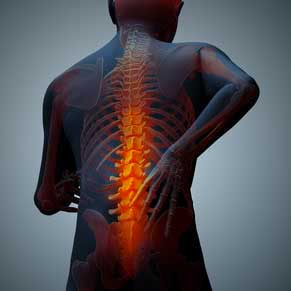A new research was released concerning the use of minimally invasive surgery to treat lower back pain from degenerative disc disease patients. According to the research, patients who are suffering from low back pain that is linked to degenerative disc can undergo minimally invasive lumbar interbody fusion. This is a type of lower back surgery that is done to patients who want to avoid invasive and traditional surgical options. The most promising result from the study is that the minimally invasive approach was more effective than the invasive surgery, specifically in managing and reducing pain.
Symptoms of DDD
Doctors point to spinal instability as the leading cause of low back pain and problems for 90% of adults. Symptomatic degenerative disc disease could also be a culprit. However, these two conditions come together to cause significant amount of pain that can limit one’s ability to function.
The doctors involved in the research study used smaller incisions during the surgical procedure to treat low back pain. And yet, it is found to be quite effective in addressing chronic low back pain. It has also minimized the possibility of suffering from complications and any sign of scarring.
X – Rays for Detection
The surgery will begin with the doctor requiring the patient to undergo an X-ray. The X-ray will enable the surgeon the pinpoint the exact location of the problem and create a small and targeted incision within the identified spot. With this incision, only the psoas muscle will be transversed in the process. Patients will also be tied to a neurologic monitoring device during the surgery to avoid nerve injury or similar complications. As soon as the spinal discs are exposed, the damage disc is removed and replaced with a specialized cage implant.
Most surgeons use lateral incision to create a smaller wound. At the same time, this type of incision will avoid contact with many vital organs in your attempt to approach the spine.
The study spanned a total of 7 years and was performed on over 300 patients. Hence, health experts involved with the study can say with finality that the results are valid. Of the 300+ patients, 120 of them were men and the 180+ were women. The mean age for all patients was 62.4 with 19 being the youngest and 93 being the oldest.
Post – Surgery
According to the head researcher, patients have reported a high level of satisfaction post-surgery. There were also minimal complications from the minimally invasive surgical procedure. In fact, most of the patients had a pain-free recovery following the surgical procedure. This has enabled them to go back to work and normal life quicker than the more open, invasive surgery.
The causes of lower back pain can either be muscle irritation, bone lesions and nerve inflammation. Other factors could also be injury or trauma to the back. Meanwhile, degenerative disc disease is one of the reasons tied to sensation of lower back pain. Either way, the advent of minimally invasive surgical options is a safer, more conservative approach to addressing the problem while minimizing the risk.



 I love to write medical education books. My books are written for everyone in an easy to read and understandable style.
I love to write medical education books. My books are written for everyone in an easy to read and understandable style.
